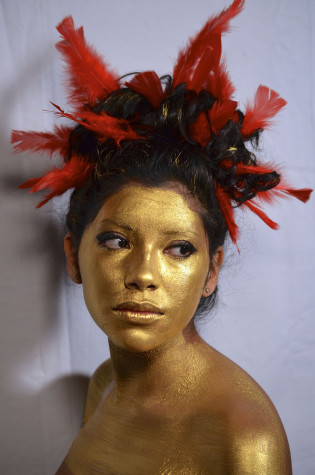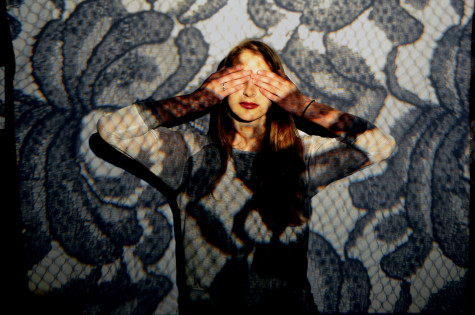by Brenda Slatton
It’s always a good time to think about offering your photography students AP credit. Through AP exams, your students will have the opportunity to earn credit or advanced standing at most of the nation’s colleges and universities.
Not certified in AP? You don’t have to be.
I’m not AP trained and I have had an average of three students creating a portfolio every year. Some are newspaper or photojournalism students but most are yearbook staff. They receive their scores over the summer and most have received 4’s.
Encouraging students to take the AP Art test (which simply entails turning in and writing about their portfolio) does take some extra time but I was surprised how little.
The whole event is easier if you h ave an AP art teacher on your campus that is willing to explain the process to you and let your students enter with all the other art students, but students don’t have to be in an AP course, nor does one even have to be offered at their school for them to get AP credit.
ave an AP art teacher on your campus that is willing to explain the process to you and let your students enter with all the other art students, but students don’t have to be in an AP course, nor does one even have to be offered at their school for them to get AP credit.
Which students should you pick? I chose students who do more than just photojournalism. They can make a flower or a rock look good. Remember, artists will be judging these. And to many artists, blurry photos are wonderful.
According to the AP website (http://www.collegeboard.com/student/testing/ap/sub_studioart.htmlStudio Art), “The only requirements are a strong curiosity about the subject you plan to study and the willingness to work hard. “
The fee for each exam is $84 however there are some fee reductions given. Details are available on the AP web site. Students will also need to plan to spend a little money on the required portfolio because they have to turn in five mounted prints and 24 digital images.
Although a lot of attention is given to the AP Exams in the spring, students should begin in the fall or even begin before their senior year, since they will need a large body of work to choose from. Their work can be produced in class or on the students own time and may cover the last few year’s work.
be produced in class or on the students own time and may cover the last few year’s work.
AP Studio Art 2-D test is based on a portfolio that students turn in for evaluation on exam day in May. The portfolio has three sections.
The Quality section is five prints at a maximum size of 18×24. These are mounted. There is not a minimum size so my students printed what they could afford. They are asked to, “select the works that best exhibit a synthesis of form, technique, and content.” I took that to mean their best five. These five can be included in the next two sections or they can be unique.
The Concentration section is 12 photos where they demonstrate a “depth of investigation and process of discovery.” This section should be photos that share a similar theme. For example, they could all include hands or all be flowers but they could also be much more in depth. My understanding is they need to show how their skills improved. My students used quality photos from last year and then moved into this year’s work. Again, they are looking for art photos, not necessarily photo journalism. I have had students use tattoos, feet, shoes, television or the American Flag, to name a few.
In the third section, Breadth, students will turn in 12 photos that, “demonstrate a serious grounding in visual principles and material techniques. As a whole, the student’s work in this section should demonstrate exploration, inventiveness, and the expressive manipulation of form, as well as knowledge of compositional organization.” In Breadth, they are showing how wide their talents are by doing a variety of things. This can be all photos or some cut up or altered photos.
The students have to turn in written responses with their work. They will need to show understanding of the elements and principles of design. On the AP website, there is a useful document called the Course Description. This goes into detail on all areas of the port folio.
folio.
Was this easy? It surprisingly was. Of course, at turn in time, we were are in the middle of preparing the last newspaper, finishing our lit mag and selling yearbooks so I have little time to critique and help choose their best shots. The students did most of it themselves and they did beautifully.
My students asked everyone they respected to take a look and we had a lot of help from the AP art teacher on campus. We journalism teachers need to sometimes remember that we are not the only teachers on campus who go above and beyond because they believe in students and their futures.
AP GRADE QUALIFICATION
5 Extremely well qualified
4 Well qualified
3 Qualified
2 Possibly qualified
1 No recommendation
AP Exam grades of 5 are equivalent to A grades in the corresponding college course. AP Exam grades of 4 are equivalent to grades of A-, B+, and B in college.
AP Exam grades of 3 are equivalent to grades of B-, C+, and C in college.



